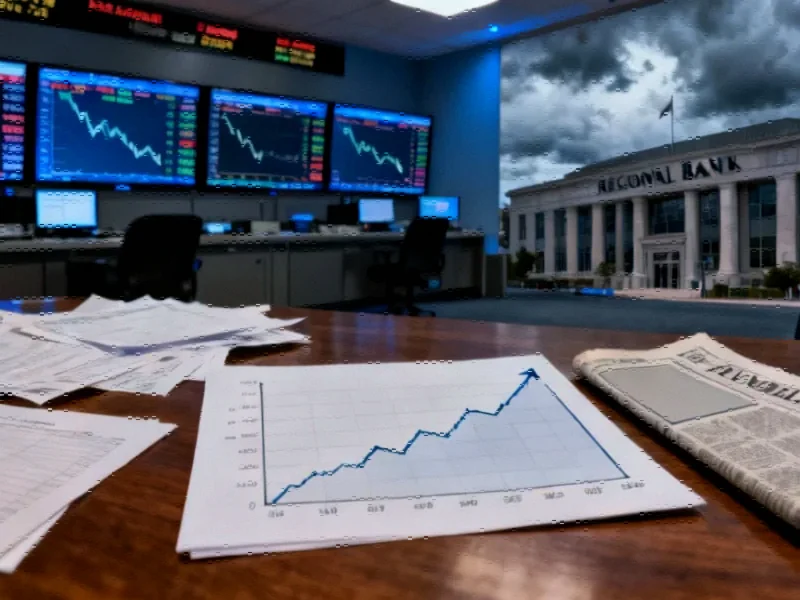China’s latest move in the ongoing trade war appears to be backfiring spectacularly. What was intended as a strategic masterstroke—weaponizing the nation’s dominance in rare earth minerals—is instead galvanizing global opposition and pushing even the traditionally unilateral Trump administration toward building coalitions. The rare earth card, long considered Beijing’s nuclear option in trade disputes, might have just lost its deterrent power.
Table of Contents
The Unintended Consequences of Export Aggression
According to reports from the Financial Times, Chinese officials are digging in their heels on sweeping export controls covering rare earths and other critical minerals despite high-level negotiations between Treasury Secretary Scott Bessent and Chinese Vice Premier He Lifeng. The U.S. characterized the Malaysia meetings as constructive, but sources indicate Beijing remains reluctant to ease restrictions that could severely impact global supply chains.
What’s particularly striking about this development is how quickly the international community has mobilized against China’s tactics. “As China’s leader Xi Jinping stands firm on implementing sweeping export controls on rare-earths and other critical minerals, signs are mounting that Asia’s biggest economy has gone too far this time,” Yardeni Research noted in analysis that captures the shifting sentiment. European and Japanese officials have joined Washington in denouncing the measures, representing a significant diplomatic setback for Beijing.
From Unilateral to Multilateral: Trump’s Surprising Pivot
Perhaps the most unexpected outcome has been the Trump administration’s sudden embrace of coalition-building. Bessent reportedly plans to coordinate with Australia, Canada, India and Asian democracies to formulate a collective response—a marked departure from the administration’s typical go-it-alone approach to trade policy. The irony is rich: China’s aggressive export controls have accomplished what years of diplomatic outreach couldn’t—getting the Trump team to seriously pursue multilateral cooperation.
This represents a fundamental shift in the trade war dynamics. Where previous U.S. tariff actions drew widespread criticism from allies, China’s export restrictions are creating exactly the kind of united front that Washington struggled to assemble. The G7’s vow to present a united front against the controls signals that Beijing may have overestimated global tolerance for supply chain weaponization.
The Stakes: Beyond Rare Earths
The implications extend far beyond the immediate trade dispute. Rare earth elements are critical components in everything from electric vehicles and wind turbines to defense systems and consumer electronics. China currently controls approximately 80% of global rare earth processing capacity, giving it enormous leverage over multiple industries. But that dominance comes with a vulnerability—if the world finds alternatives, China’s strategic position erodes permanently.
What makes this moment particularly perilous for Beijing is the timing. The global push toward electrification and renewable energy means demand for rare earths is projected to grow exponentially in coming years. By triggering a coordinated international response now, China risks accelerating the very diversification it sought to prevent. Companies worldwide are already reevaluating their reliance on Chinese supply chains, with Yardeni Research noting that “Xi’s latest trade war tactic may be tipping the geostrategic balance back toward the US as companies around the world think better of doing business in China generally.”
The Alternative Supply Race Accelerates
Meanwhile, the scramble for alternative rare earth sources has intensified dramatically. The U.S. is turning to allies like Australia to develop new supply chains, though building meaningful capacity could take years. This isn’t the first time China has flexed its rare earth muscles—a 2010 dispute with Japan led to similar diversification efforts—but the current scale and coordination are unprecedented.
The challenge for alternative suppliers has always been the processing expertise and environmental regulations that make production complex and costly. China’s comparative advantage isn’t just geological—it’s technological and regulatory. But with sufficient investment and political will, other nations could eventually replicate China’s capabilities. The question is whether the current crisis provides enough impetus to overcome the technical and economic hurdles.
The Negotiation Calculus
Both sides now face critical decisions ahead of the planned Trump-Xi summit on Thursday. The U.S. has signaled willingness to compromise, with Trump telling reporters aboard Air Force One that “Sure they’ll have to make concessions. I guess we will too.” But the 157% tariff threat hanging over Chinese exports represents enormous pressure on Beijing to find a resolution.
What’s particularly interesting is how both sides are learning the limits of their economic weapons. The U.S. discovered that tariffs alone couldn’t force Chinese compliance, while China is learning that export controls can trigger counterproductive international backlash. This mutual education might ultimately lead to more sustainable trade relationships—or it could push both nations toward even more aggressive positions if they feel their core leverage has been compromised.
Historical Parallels and Future Implications
This isn’t the first time a dominant power has overplayed its hand with resource controls. The 1973 oil embargo ultimately accelerated conservation efforts and alternative energy development, reducing OPEC’s long-term influence. Similarly, China’s rare earth restrictions could catalyze the very supply chain diversification that diminishes its strategic advantage.
The broader implication for global trade is profound. If resource nationalism becomes a standard tool in trade disputes, we could see accelerated fragmentation of global supply chains and renewed emphasis on regional self-sufficiency. For multinational corporations, this represents both risk and opportunity—the chance to build more resilient operations, but at potentially higher cost and complexity.
What’s clear is that the rules of economic statecraft are being rewritten in real time. China’s rare earth gambit was supposed to demonstrate its economic might. Instead, it may have revealed the limits of coercive trade tactics in an increasingly interconnected global economy. The coming week’s negotiations will tell us whether both sides have learned this lesson—or whether we’re headed toward even more dramatic economic confrontation.
Related Articles You May Find Interesting
- UC Berkeley’s OpenEvolve AI Creates Algorithms 5x Faster Than Humans
- BlaBlaCar’s India Comeback Makes It Company’s Largest Market
- SAMCA Group to Build €2.6 Billion Green Data Center Campus in Spain’s Aragon Region
- Windows 11 Tests Automatic Memory Diagnostics After System Crashes
- The Teen Job Apocalypse: How Automation Is Devouring Entry-Level Work




Hai, saya ingin tahu harga Anda.